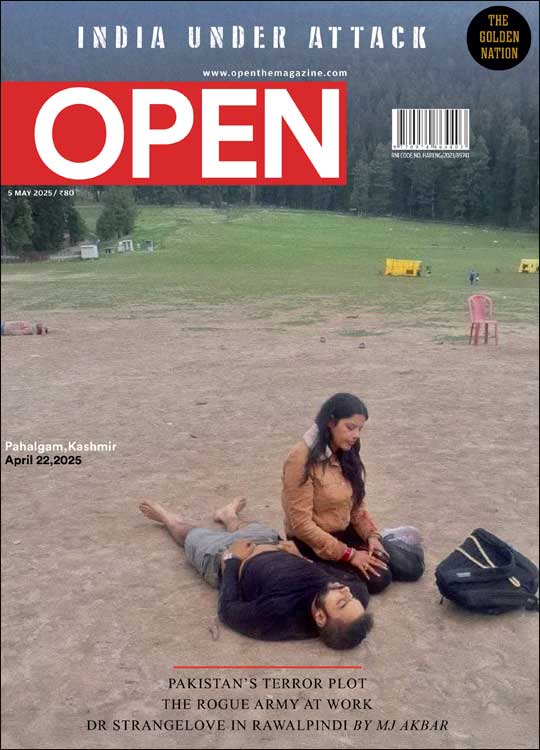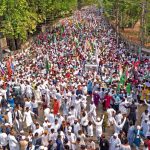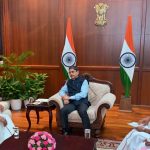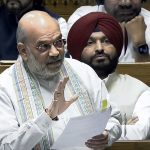The Pitch Update
WhatsApp is expected to replace Facebook as the online battlefield in 2019
 Ullekh NP and Amita Shah
Ullekh NP and Amita Shah
 Ullekh NP and Amita Shah
|
28 Jun, 2018
Ullekh NP and Amita Shah
|
28 Jun, 2018
/wp-content/uploads/2018/06/Pitchupdate1.jpg)
DIVYA SPANDANA HAS fans requesting selfies with her wherever she goes. This actor-turned politician from Karnataka who now heads the social-media division of the Congress party obliges such entreaties as if by force of habit. When she sits back to chat, she says she is saddled with work, and it shows: in between sentences, she sinks herself into her many mobile devices and makes umpteen calls, all to do with work. “I take on a lot of stress and my work doesn’t end at all,” Spandana says with a smile.
The work has paid off. She has revamped the social-media wing of her party, of which she was earlier an MP, having won the Mandya seat in Karnataka via a by-election in 2013 and lost it a year later by a slender margin. Known to be a hard task- master, her team of 40-odd people consists mostly of young women below the age of 30 and includes techies, social scientists and creative people. She acknowledges the might of the social-media arm of the rival, the BJP, whose victory in the 2014 General Election—and in many state elections that followed— is often attributed to the clever use of social network platforms that have tirelessly pitched its chief campaigner Prime Minister Narendra Modi as a messiah who is determined to take India to a superpower status. The resources at the BJP’s disposal are vast, as also its all-India reach, especially since it has extended its electoral influence to newer regions. Even after four years of being in power, Modi and his party employ the Prime Minister’s ‘outsider’ image to show down the Congress, which has been in power at the Centre for long and is allegedly hand-in-glove with an elitist establishment of status quoists that the BJP dismisses as the ‘Lutyens Delhi cabal’. Projected as the perpetual outsider, Modi seems to have an advantage on this front.
Besides heading a leaner team with tighter budgets than the BJP’s, challenges abound for Spandana, who in her screen avatar is called Ramya and was once a sensation of Kannada, Tamil and Telugu cinema before she called it quits in 2012 and joined the youth wing of the Congress and then contested an election. Ensuring that her party’s social media campaign is of the desired quality, she believes, will play a key role in countering the BJP’s enormous online reach.
The BJP has leveraged online platforms heavily so far, drawing legions of supporters to its aid, the success of which is complicated only by an irresponsible bunch of cyber scapegraces whose verbal attacks are an embarrassment to the party; even the BJP’s own stalwarts are not spared if they are seen to contravene cast-iron codes of behaviour expected of them. The latest online attack on Minister of External Affairs Sushma Swaraj is a case in point. Right-wing trolls made abusive personal references and accused her of ‘favouring Muslims’ after she intervened in a case related to an inter-faith couple’s passport application.
Politics was turning social media-oriented even earlier, but the rapid penetration of smartphones in India is making it central to conversations in the country, now that people across geographies— and even seated in the same classroom—use them to connect, share news, discuss political events, crack jokes and make plans, be it by posting updates on work projects or day-to- day notices about catching a movie or going on holiday. Aware of the ubiquity of instant communication apps such as WhatsApp, political parties have gone ultra-local in aiming messages at voters. While in 2014 and in subsequent state elections it was Facebook that politicos and their associates used as a medium even at booth levels (a booth being the smallest unit in a poll constituency), starting FB pages for each neighbourhood to initiate discussions that favoured their parties, WhatsApp is increasingly becoming the chief platform in the run-up to state elections in Rajasthan, Madhya Pradesh and Chhattisgarh and the General Election next year.
The so-called ‘media dark’ areas—where telecom signals are non-existent or weak—have always been important to political parties. The BJP ran an energetic contact campaign in the hinterland of Bihar in 2014, a model later picked up by the cycle-borne campaigners of the Samajwadi Party and others across India. But now connectivity has improved and even voters who are below the poverty line and live in far-flung rural places are reportedly on WhatsApp, and there is no way that old-style, door-to-door vote canvassing can match its efficacy in mobilising support.
India’s largest political parties are banking more on WhatsApp than Facebook, though both have deep penetration. Twitter, meanwhile, has a unique appeal among upwardly mobile urban voters
The BJP strategists are tightlipped about their plans, though it is well known that it had booth-level coordinators for social media in elections held recently, including those in Karnataka and Gujarat. The ruling party doesn’t want to reveal the number of people it is hiring across India to help run its social media campaign at ultra-local levels, but insiders, even those in southern states, reveal that the online apparatus of their party is well oiled and that they have already begun work for 2019. The BJP, now India’s largest party on Instagram, is planning to focus on every social network and for obvious reasons: two years ago, a study by Nasscom and Akamai Technologies had forecast a two-fold increase in the country’s base of internet users by 2020 to touch 730 million. Like the Congress and other parties, the BJP is banking largely on WhatsApp and Facebook, which have deep penetration, as well as Twitter, which has a unique appeal, especially among socially mobile urban voters. Insiders say that the BJP will explore every digital option, even newer ones. The party’s IT cell is training its workers at the national and state levels on the effective use of social media, an effort stepped up after its bypoll losses in Uttar Pradesh earlier this year. A senior state-level BJP leader has been quoted by PTI as saying that the state unit will hire 200,000 new members for its ‘cyber sena’ for 2019.
In the backdrop of the enhanced priority that parties are placing on WhatsApp—thanks to the more focused targeting of groups it offers, besides the relative anonymity of the original source and perceptions of confidentiality among users—the Congress party plans to recruit 900,000 ‘cyber warriors’ from across the country over the next few months to help with its booth-level campaigns. Of this number, Spandana declares, one- third have been identified and cyber managers at Assembly-seat levels have all been trained at national workshops to carry out the party’s campaign. “These trained assembly-level volunteers will now coach others on how to disseminate information through WhatsApp groups,” she notes, clear that WhatsApp is the platform on which the 2019 battle will be fought.
“WhatsApp is the Facebook of the 2019 election,” agrees a former strategist with a group that had worked for Modi on the 2014 campaign that saw the emergence of social media as a pivotal tool. Spandana is assisted by a woman-dominated team at 15 Gurdwara Rakabganj Road in Delhi. Seated inside a large hall adorned with TVs on walls and full of computers, they come up with humorous lines, wisecracks and graphics for the Congress. Spandana claims that the viewership count of videos uploaded by her team on the Twitter handle @INCIndia is higher than that of the party’s main rival, though the BJP has many more followers. She draws attention to the numbers of a yoga video the team put up, compared with a similar video shared by Modi.
The most people-savvy leaders know how social media can be used as the lynchpin of their campaigns. Modi was an early adopter of the medium
“Humour is what we have been betting big on,” says Spandana, under whose watch the Twitter handles of @RahulGandhi and @INCIndia have seen a quick gain in followers (and visits) ever since she took over the position of social media chief last May. Back then, an AAP online strategist had poked fun at her nomination to the post, underestimating the impact she would have.
But with the BJP’s original digital experimenters battening down the hatches and preparing for a social media blitz, taking advantage of the seemingly unassailable lead that their leader enjoys in perceptual terms, the next General Election is expected to see much heat in the online space. Amit Malviya, in charge of the BJP’s IT cell, isn’t someone who will share any details, but offers: “In 2019, social media will be an important tool. It will be far more pervasive as compared to 2014.” In an apparent bid to play down the scale of their preparations, Malviya—who is assisted at the IT cell housed inside the new BJP headquarters in Delhi by scores of professionals employed by the party on monthly salaries to manage websites, do research, handle content analytics and manage technological aspects—says the BJP has on its payroll just around 100-150 people, while the rest are volunteers. According to him, the party does not need to recruit people since it has such large numbers ready to aid the effort across age groups and professions in India. “Social media has bridged the gap between the haves and have-nots. It has led to democratisation of discourse…. People are discovering the other side of the narrative,” says Malviya, whose team also falls back on jokes to connect with people. One of its most notable successes has been the branding of Congress President Rahul Gandhi as a preppy politician tied to his mother’s apron strings, a caricature the Congress cyber team has been trying hard to negate.
Modi has a following of 43.2 million on Twitter. He is the most followed politician after Barack Obama and Donald Trump
Sure, social media continues to give politicians the world over a channel to address voters directly, and in this fierce game, some are more equal than others. The most people-savvy of leaders know how social media can be used as the lynchpin of their campaigns. Modi was one of the early adopters of the medium after he realised how such apps could be used to bypass the mainstream media—for whom he was a relative persona non grata for many years following the 2002 Gujarat riots—and establish a direct equation with his electorate.
Worldwide, too, more and more politicos are spending extra time and energy on such sites and ditching conventional stump-speech campaigns, the most famous example being US President Donald Trump, whose rise to the White House was allegedly aided by Russian hackers who created thousands of phoney tidbits of information to influence disgruntled voters. Scores of other leaders besides Trump—whose methods and message are often compared with Modi’s—in various countries have taken to social media to vocalise themselves, unedited and unfiltered. Hollywood actor Denzel Washington recently captured the predicament of people who are often caught in a fake-news firestorm and are sceptical of all sources of information: “If you read newspapers, you’re misinformed. If you don’t, you are uninformed.”
In an age when conventional media, including TV channels, are making a contrived outreach to people through unfiltered content, thus partially apeing social media, the latter is gaining strength. For instance, a Ghazipur-based journalist who admires Modi is upset that WhatsApp messages these days are full of rubbish peddled by self-styled custodians of the Hindu faith (and of others). He isn’t averse to the idea of political parties campaigning fiercely, calling out each other for their failures and frailties, but complains that messages on the app are replete with what he calls ‘distortions’. There is mischievous propaganda, he says, that is carried out against journalists who don’t “toe the line”. The phenomenon isn’t rife among the majority alone; Urdu websites and WhatsApp groups administered by clerics with vested interests are also full of alarmist falsehoods that drive a wedge between India’s two main religious communities.
Nasty words frequently appear online. Right-wing trolls attacked even the BJP’s Sushma Swaraj after she intervened in an inter-faith couple’s passport application
ORE YOUNG EDUCATED people are joining the online bandwagon, regardless. It gives them an entry point to politics, which was once the preserve of cadres and leaders, and many feel empowered by their ability to participate thus. For instance, Arjun, one of the BJP volunteers who Open spoke to, says that he returned to his cushy job after working for Modi’s 2014 campaign. Now he is back for the next one. “I will do crowd sourcing from the remotest parts,” he says, “I will ask villagers if they have got electricity and gas connections. I will record a video and put it online.” While the BJP does not give out any official figure of its unregistered social media volunteers, it has close to 1.2 million registered volunteers, according to a party official. Another BJP online worker says that when certain tweets do not get the desired attention, they get aggressive by posting jokes, sarcasm, one-liners or videos. He often puts out jokes on Rahul Gandhi and Delhi Chief Minister Arvind Kejriwal. According to him, the BJP IT cell offers money in exchange for favourable tweets. This might explain why tweets from multiple handles often read so alike.
The Prime Minister, sensing the potential of social media around a decade ago, first adopted Twitter in January 2009, while he was Chief Minister of Gujarat. His first tweet was on February 2nd that year: ‘I will be in Dahod for Gujarat Swarnim Jayanti Yatra’ Since then, he has put out over 19,700 tweets on subjects ranging from politics to cricket. Modi currently has a following of 43.2 million and follows 1,942 other handles on Twitter. Trump’s Twitter following outnumbers Modi’s by some 10 million. After former US President Barack Obama, who has over 100 million followers, and Trump, Modi is the third most followed politician in the world. He also interacts closely with select groups through his NaMo app, is very popular on his @ PMOIndia handle and his Facebook page. The Indian Prime Minister is also the first world leader to use a Twitter Mirror, an exclusive app that produces autographed selfies and posts them while he is on tour. His party’s handle, meanwhile, is set to cross a Twitter following of 10 million, while the Congress is at 4.5 million.
As Open had reported earlier, social media in politics got a big break during the Arab Spring, when such platforms were the sole hope for pro-democracy movements and repressed millions in many countries of the Middle East and North Africa to air their thoughts and seek change. Of course, it is a double-edged sword, as it also promotes ideological ghettoisation by encouraging homogenous groups to bind. A smartphone with a net connection is for some a window to the world, but it could also tune people out who don’t conform (see ‘How Social Media is Shaping the New Political Order’, Open, December 5th, 2016)
While political parties are gung-ho about WhatsApp as a means to reach out to millions of voters, its misuse poses a menace too. It has led to attacks on people who are treated as the ‘other’, those who do not share common beliefs and are treated as fair game. Video messages circulated among communist cadres in Kerala have allegedly resulted in political murders. The phenomenon of fake stories on social media—often ‘backed’ by digitally generated images and video clips—has taken on alarming proportions, putting the lives of innocents in danger. Though police officers have lately been holding workshops to familiarise people with the menace, there are no signs of a dip.
Worse is the peril of global terrorism aided by social media. Organisations such as ISIS and other extremist networks have brainwashed and recruited youth from privileged backgrounds to their cause through online platforms, including the highly encrypted Signal and Telegram (which are similar to WhatsApp). Walkie-talkie apps are also gaining traction as emergency messaging services.
In a democracy, every campaigner seeks an edge over rivals through clever packaging of the political message, and since the package today is largely digital, the social media teams of India’s top parties will be vying ferociously for online gains. But for the Indian voter, who has yet to grasp the art of telling spin apart from reality, especially in a world that lacks the checks and balances of traditional media, it could prove taxing.

/wp-content/uploads/2025/04/ToC-Cover-Pahalgam.jpg)













More Columns
Hindu lives too matter: US spy chief Tulsi Gabbard Open
The Line Must Move Shubhrastha
Khadi sector scaling new heights even as FMCG giants incur losses Open